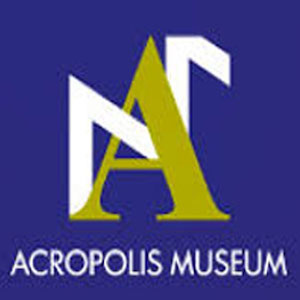The Acropolis Museum
The Acropolis is the name for the hill in the center of Athens which is home to the Parthenon and a host of other archaeological remains. Though the hill was inhabited as early as the 4th millennium BCE, the first phase of the construction which remains today began in the fifth century BCE. Over the course of Greek history, the buildings have been damaged several times due to invading forces and explosions. Ancient Greek civilization, particularly the city of Athens, has been enormously impactful on global history. The Greeks themselves were involved in global trading networks and were exposed to civilizations across Africa and Southwest Asia. And, when Alexander the Great came to power, the Greeks momentarily controlled a vast swath of AfroEurasia, until his death. The kingdom divided among his generals and the Greek influence remained. The Romans were also heavily influenced by the Greeks, producing what is known as Greco-Roman culture. Many modern western civilizations have referenced the Greeks as their forebears, particularly since the 18th and 19th century rise of archaeology uncovered Greco-Roman statues and architectural remains. Today, the Acropolis Museum safeguards the archaeology of the Athenian Acropolis and offers educational resources both physically and digitally.
Though the Acropolis Museum offers physical educational resources, including free traveling museum boxes, we will focus here on their digital offerings. Because the museum is in Greece, sending a museum box to educators outside of the country may not be within their power.
One of the online resources the museum offers is a 90 minute virtual museum visit (https://www.theacropolismuseum.gr/en/online-programs). They offer lessons on the Acropolis Monuments (4th-7th grade), Plants and Animals (1st-3rd grade), The Story of a Fabled Hill (4th-6th grade), Shaping Marble (7th-9th grade), Athenian Professions (9th-11th grade), and a tour of the museum (6th-11th grade). All these virtual programs require scheduling in advance either by phone or email. Because so many of these programs are aimed at elementary and middle schoolers, they may be a good introduction to Greek history and culture, mythology, architecture, or the environment.
The museum also offers digital applications (https://www.theacropolismuseum.gr/en/multimedia-applications) which can be browsed all together or divided into elementary and junior/senior high school resources. These mostly include short (under 10 minutes) videos on topics such as excavation, the history of the Acropolis, Greek statues and art, individual buildings, and the removal of the Parthenon’s marble statues. The excavation and marbles videos might be useful for, in addition to teaching Greek history, helpful for educators wishing to discuss imperialism and globalism through material culture. The Parthenon marbles remain a hotly debated issue, so educators wishing to use this video might consider also introducing students to the debate about museum holdings. Other videos are reproductions of historical events such as the Persians destroying the Acropolis during the Greco-Persian War, scenes from an Ancient Greek wedding, and Athenian myths. The short length of these videos might make them useful for educators who would like to supplement what they already have planned for a Greek lesson or might build a larger lesson around the video’s content.
The digital applications also include an interactive timeline (https://xronologio.theacropolismuseum.gr/en/-6000/2023) which allows users to click through different periods in the history of the Acropolis, an interactive Parthenon frieze (https://parthenonfrieze.gr/en/?sn=0) which can be explored by theme or side, or used to learn about the Parthenon more generally. The frieze also offers two games, which allows users to play a God, Man, Animal memory game to discover the frieze’s figures or to color the frieze. The Colors of the Frieze game is a useful tool for showing students that Greek statues and art were originally painted rather than all white. This game might allow educators to reintroduce color and nuance to their lessons on Greek art and history. Historians have pointed to the modern lack of coloring on Greek statues as a justification for feelings of white superiority, therefore coloring the frieze and talking about this phenomenon may also be a point of entry for educators wishing to teach their students about race and racism. Finally, the last digital application is an interactive wedding day activity (https://wedding.theacropolismuseum.gr/wedding_en/about/about.php) meant to guide users through the process of an Ancient Greek wedding and to teach them about Greek culture along the way.
The final digital resource the museum offers is the Acropolis Education Resources Repository (http://repository.acropolis-education.gr/acr_edu/?locale=en). This is a searchable database of lesson plans and classroom resources. However, most of these are in Greek, so may be less useful for English-language classrooms.
